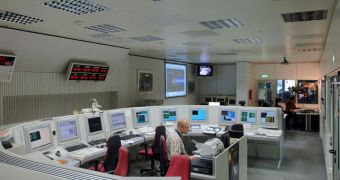An European mission composed of four satellites flying in formation was nearly lost, but experts in charge of controlling their operations managed to save it at the last moment. However, this took a lot of ingenuity, as well as an unorthodox 'dirty hack.'
The mission, called Cluster, became endangered this March, when the primary science package aboard one of the four spacecraft stopped answering commands relayed by ground controllers. Experts were unsure whether they would ever be able to revive the satellites.
Scientists say that two Soyuz-Fregat rockets carried a pair of Cluster spacecraft each, in launches that took place on July 16, 2000 and August 9, 2000, respectively. Both delivery systems blasted off from the Baikonur Cosmodrome in Kazakhstan.
Earth's magnetosphere is the primary target of the orbital instruments. Their job is to assess how conditions in this protective layer of the atmosphere change over the course of an entire, 11-year solar cycle. At this point, the mission is beyond the 10-year, 9-month mark.
Four identical Cluster spacecraft were launched, and they were assembled in space in a tightly-knit and accurately-controlled, tetrahedral formation. Each satellite weighs around 550 kilograms.
In order to make carefully orchestrated observations, the Wave Experiment Consortium (WEC) instrument suite on each Cluster probe needs to function in tune with the others. WEC accounts for 5 out of each satellite's 11 instruments.
The Cluster number 3 satellite, dubbed Samba, experienced a glitch on March 5, when its WEC could not be switched on. Standard recovery procedures set in motion by ground controllers at the European Space Agency's (ESA) European Space Operations Center (ESOC) were unsuccessful.
“With no status data and no response from the instrument, we suspected either that the device's five power switches were locked closed or a failure caused by an electrical short circuit, one of the most dangerous faults on any satellite,” explains Cluster operations manager Jürgen Volpp.
“The solution was based on a 'dirty hack' – jargon referring to any non-standard procedure – but we really had no other option,” he adds. It took experts until June 1 to devise the code lines, and to test them on another Cluster satellite for faults.
The endeavor was successful, and now the four-satellite constellation is slowly returning to active duty, all of its WEC instrument suites working in tune again.
“When everything goes as planned, flying a mission can be routine. But when unexpected trouble occurs, and there's nothing in the manuals, you really want to have an experienced and talented team on hand to solve the problem,” concludes the head of ESA Mission Operations, Manfred Warhaut.

 14 DAY TRIAL //
14 DAY TRIAL //